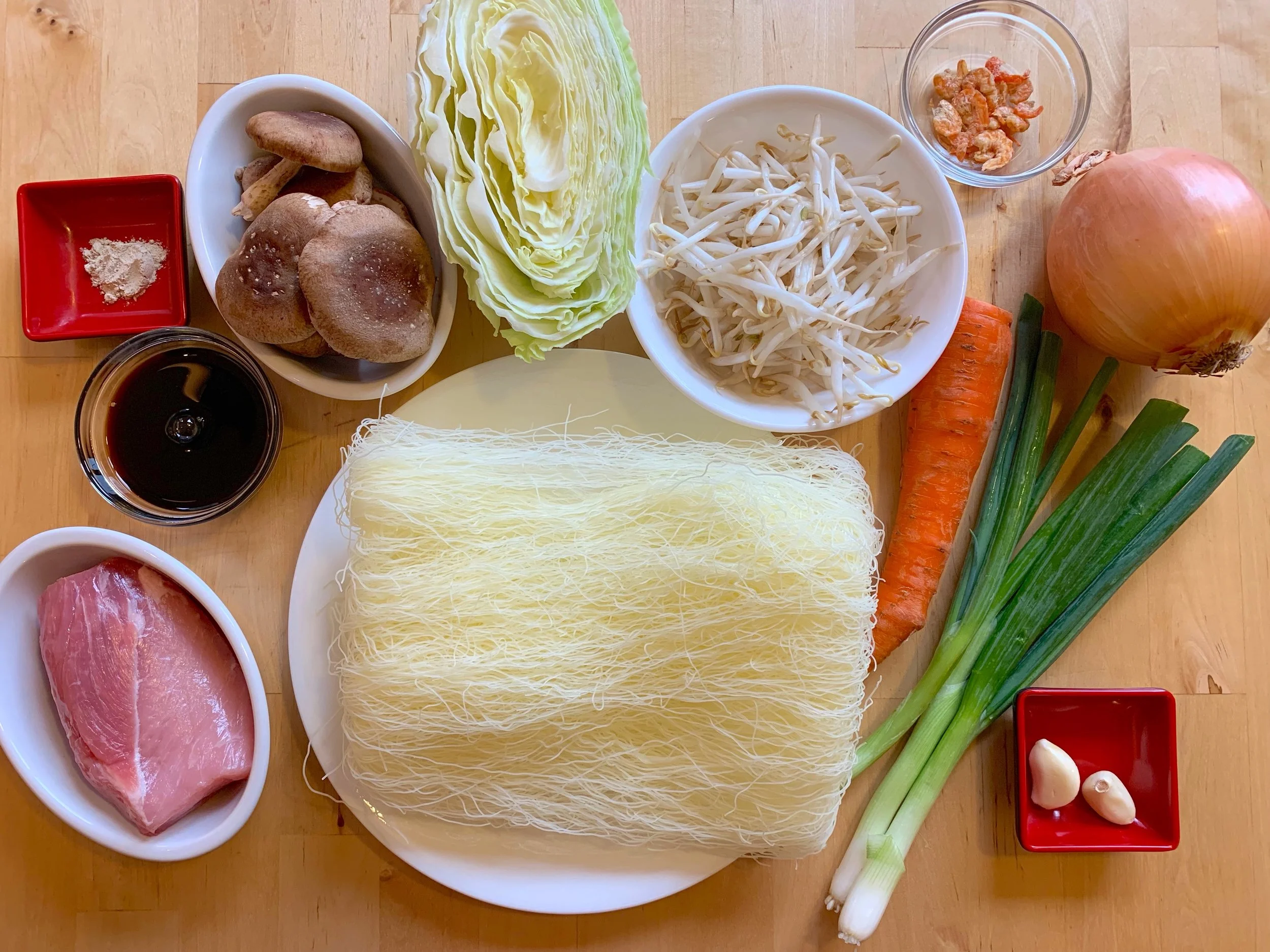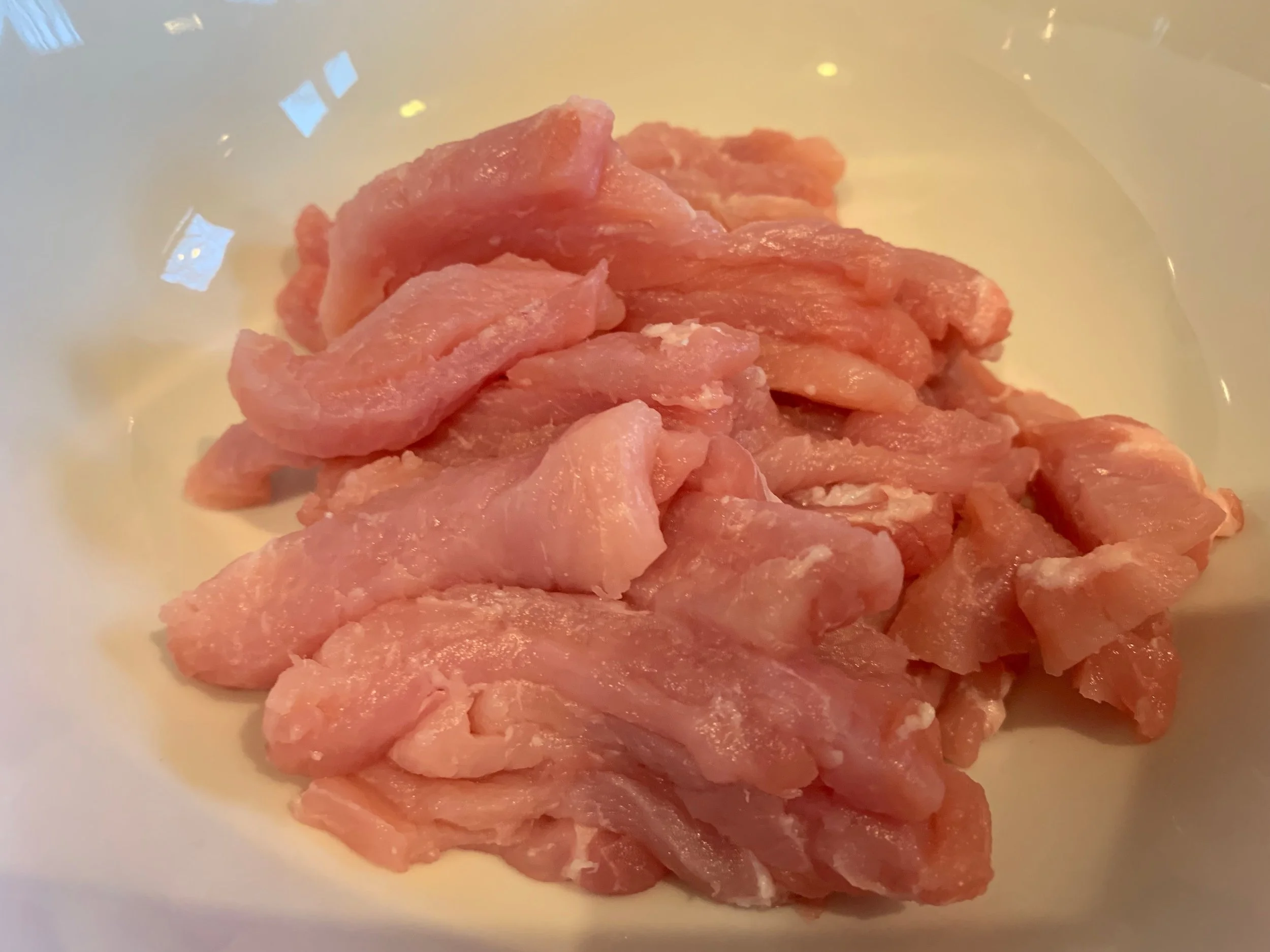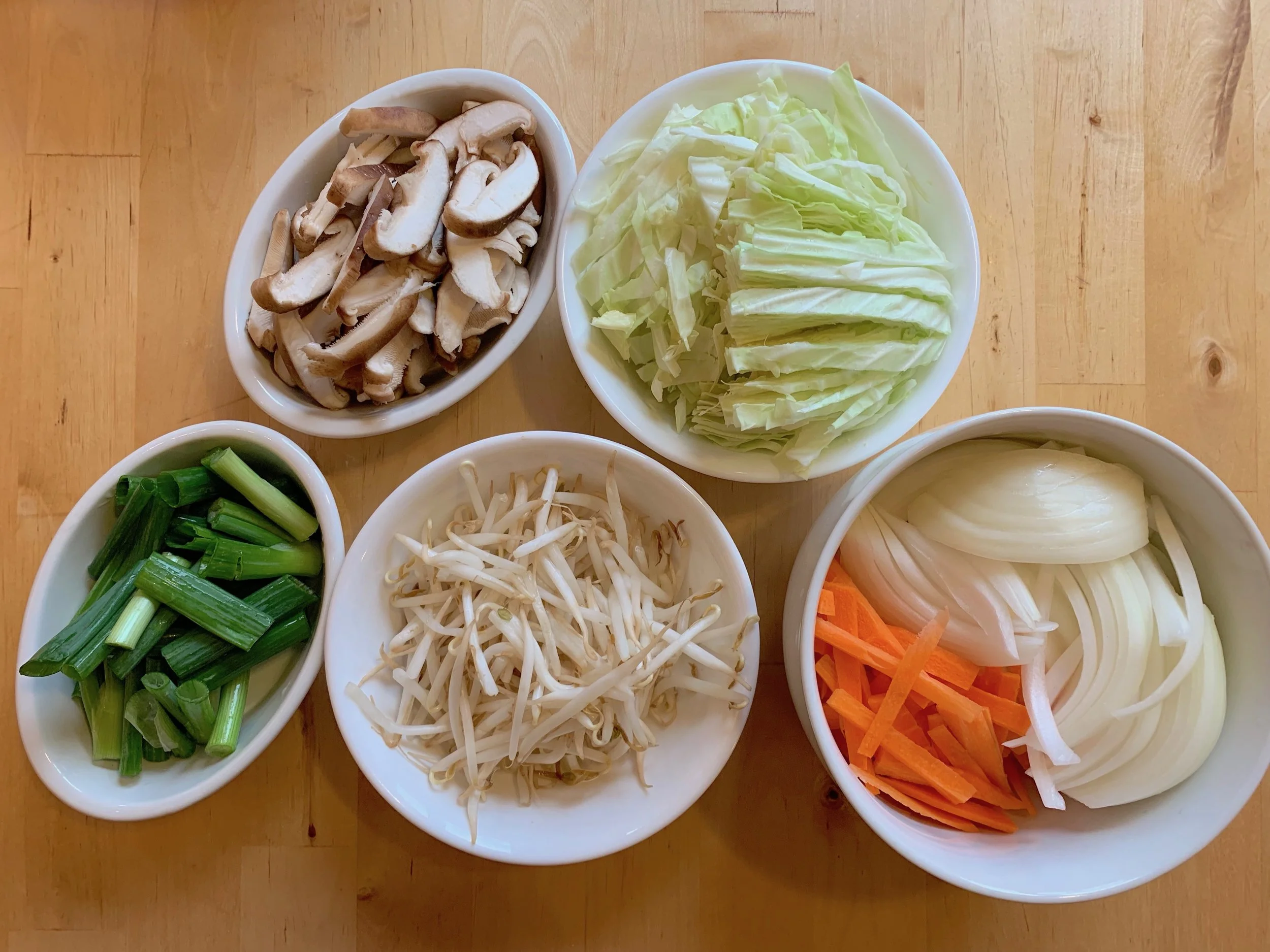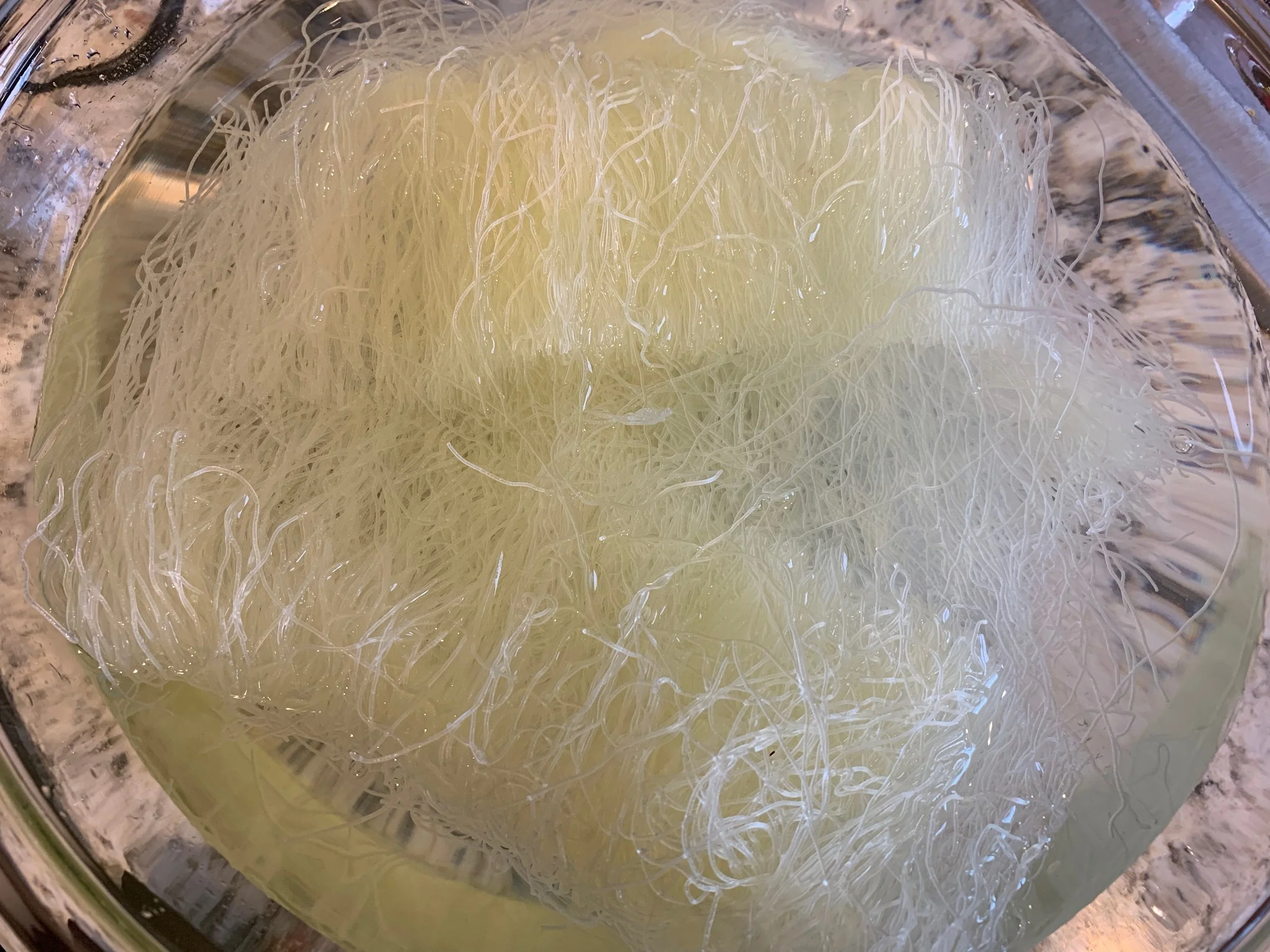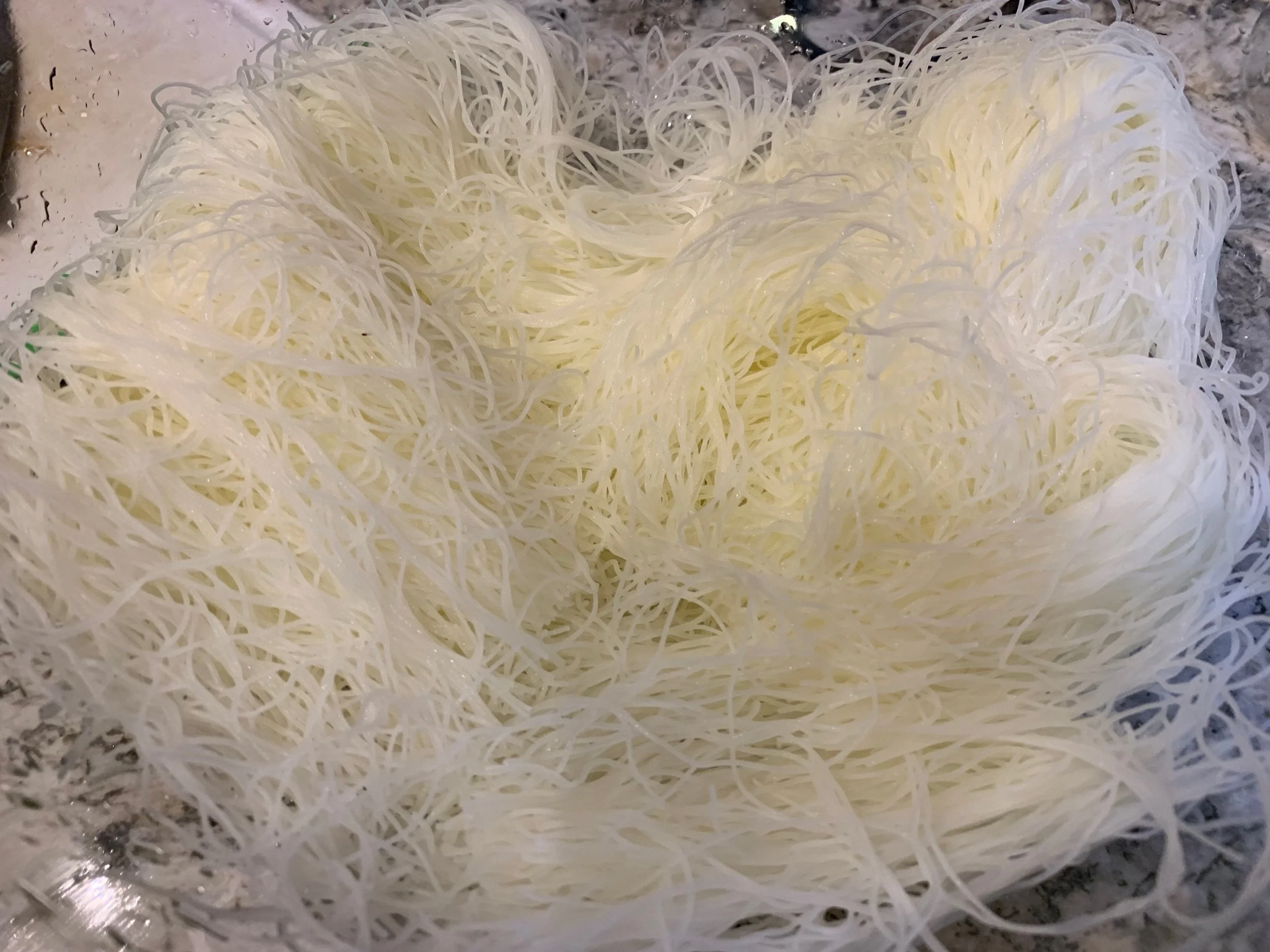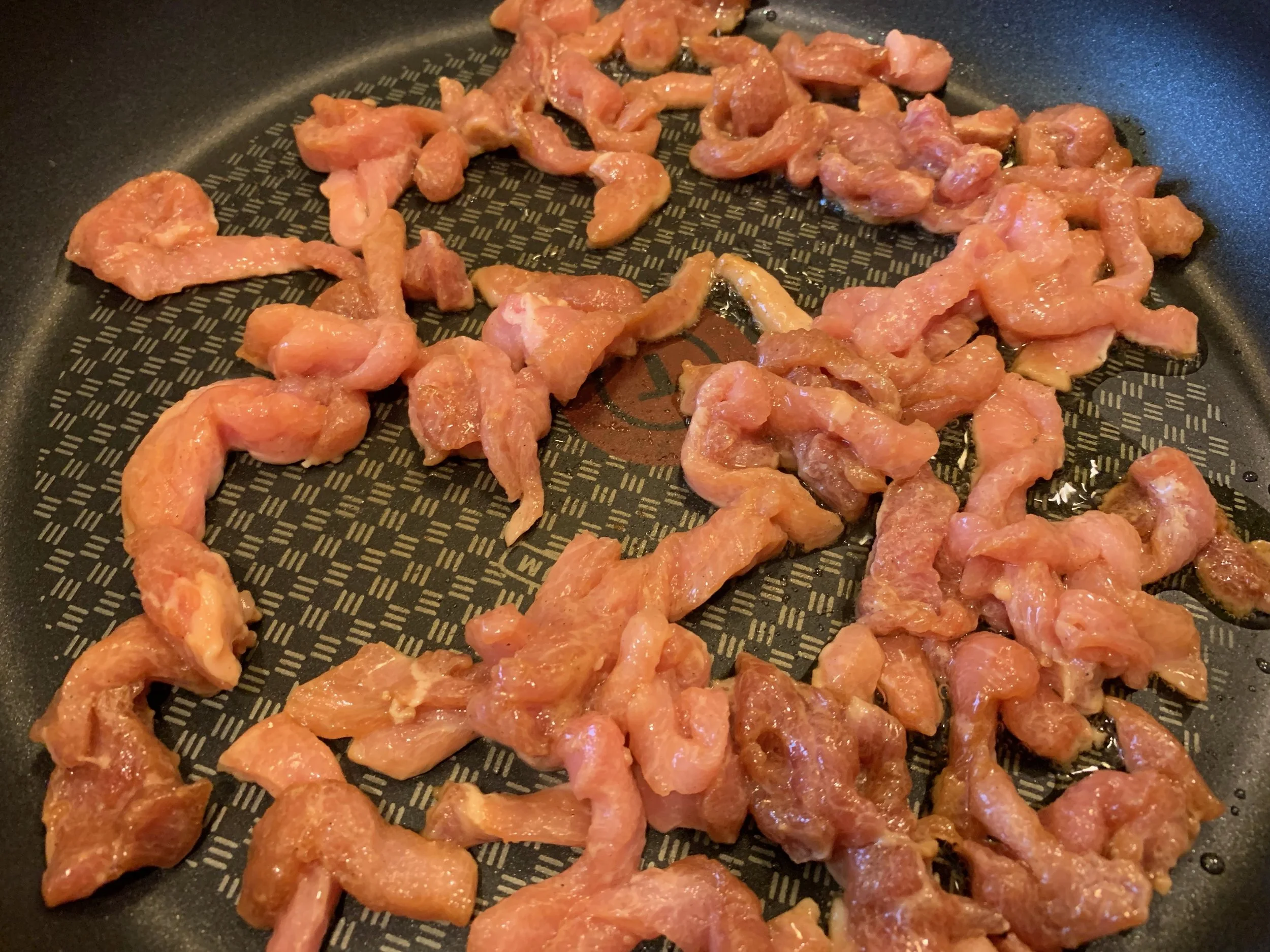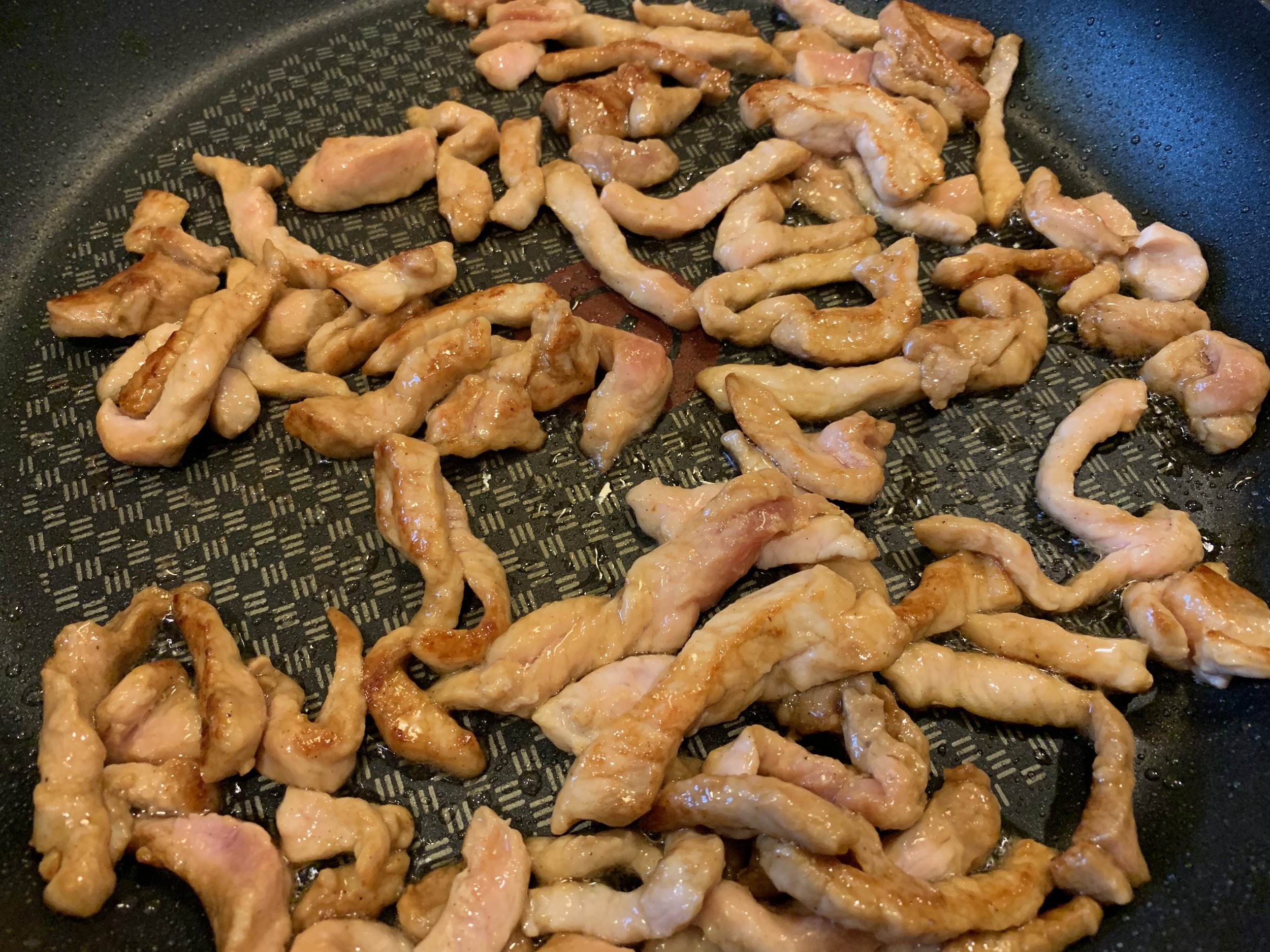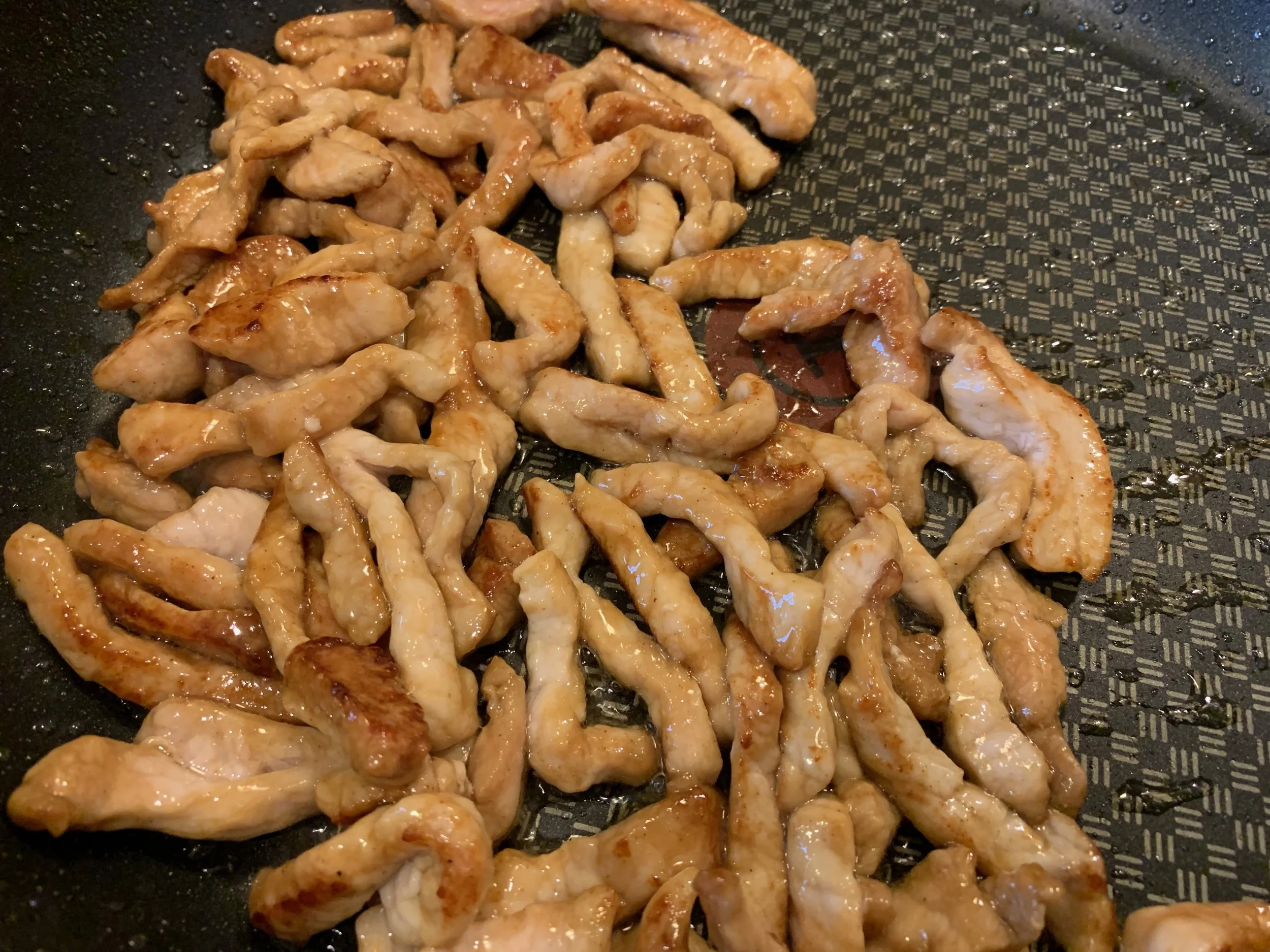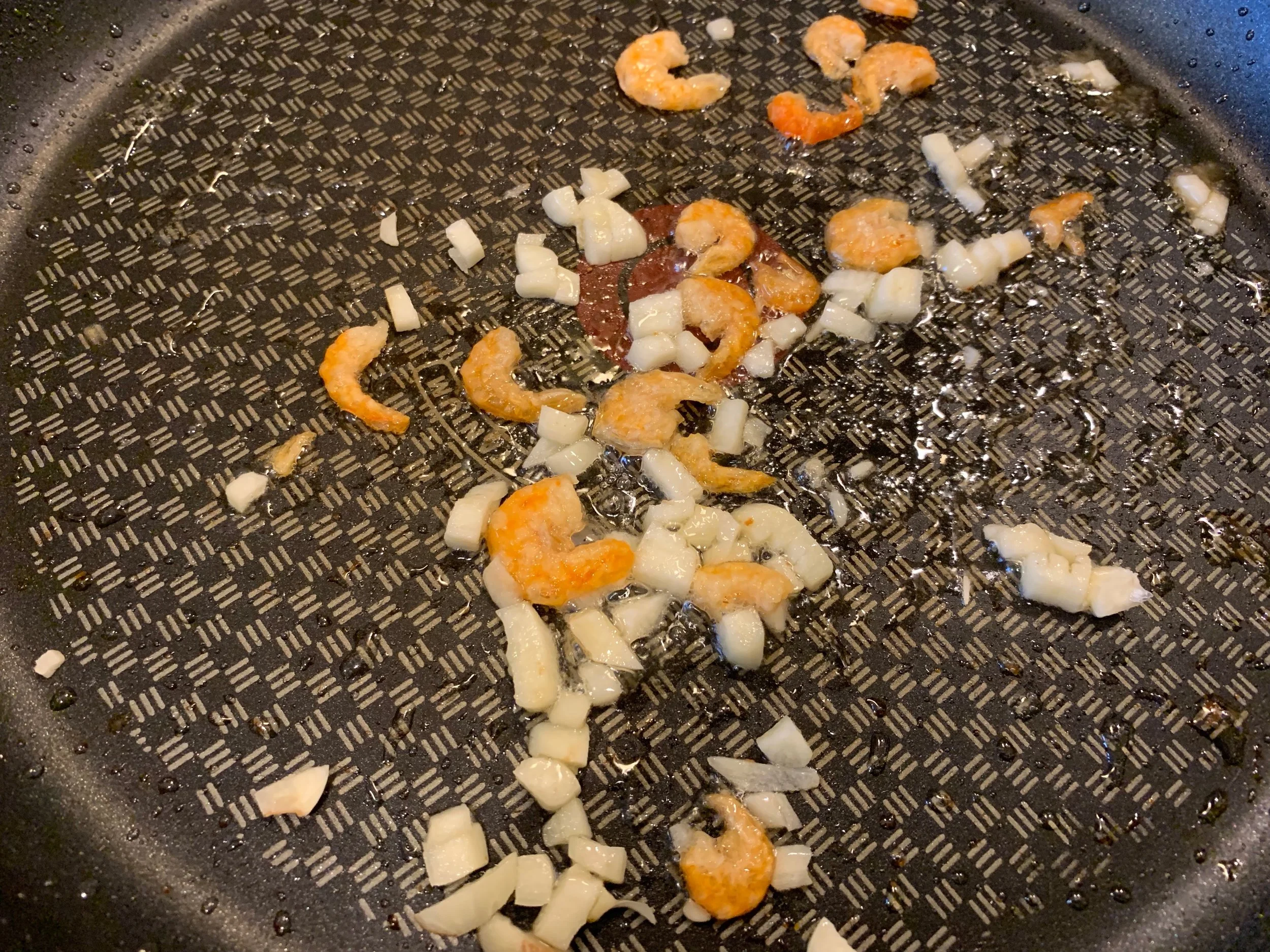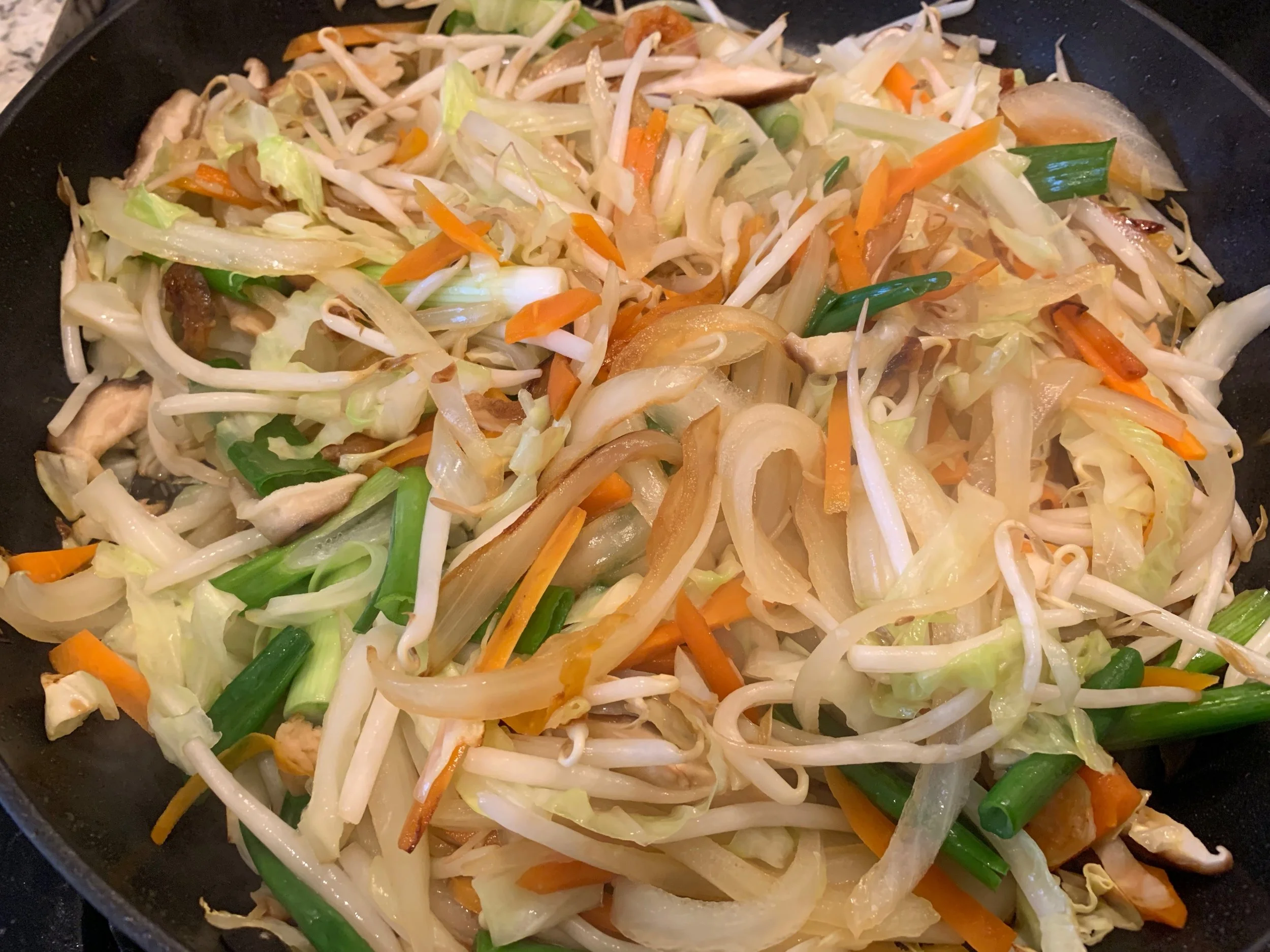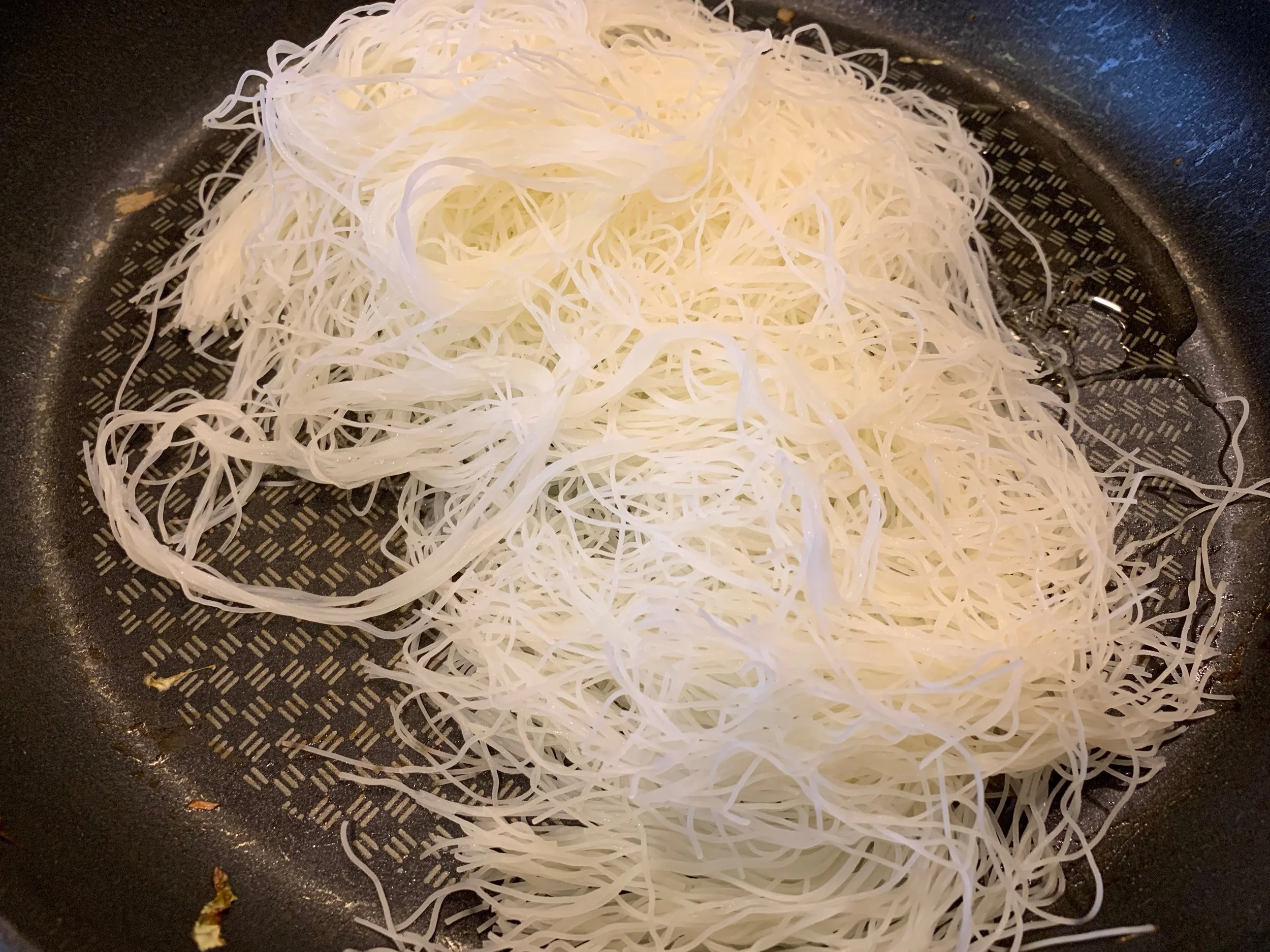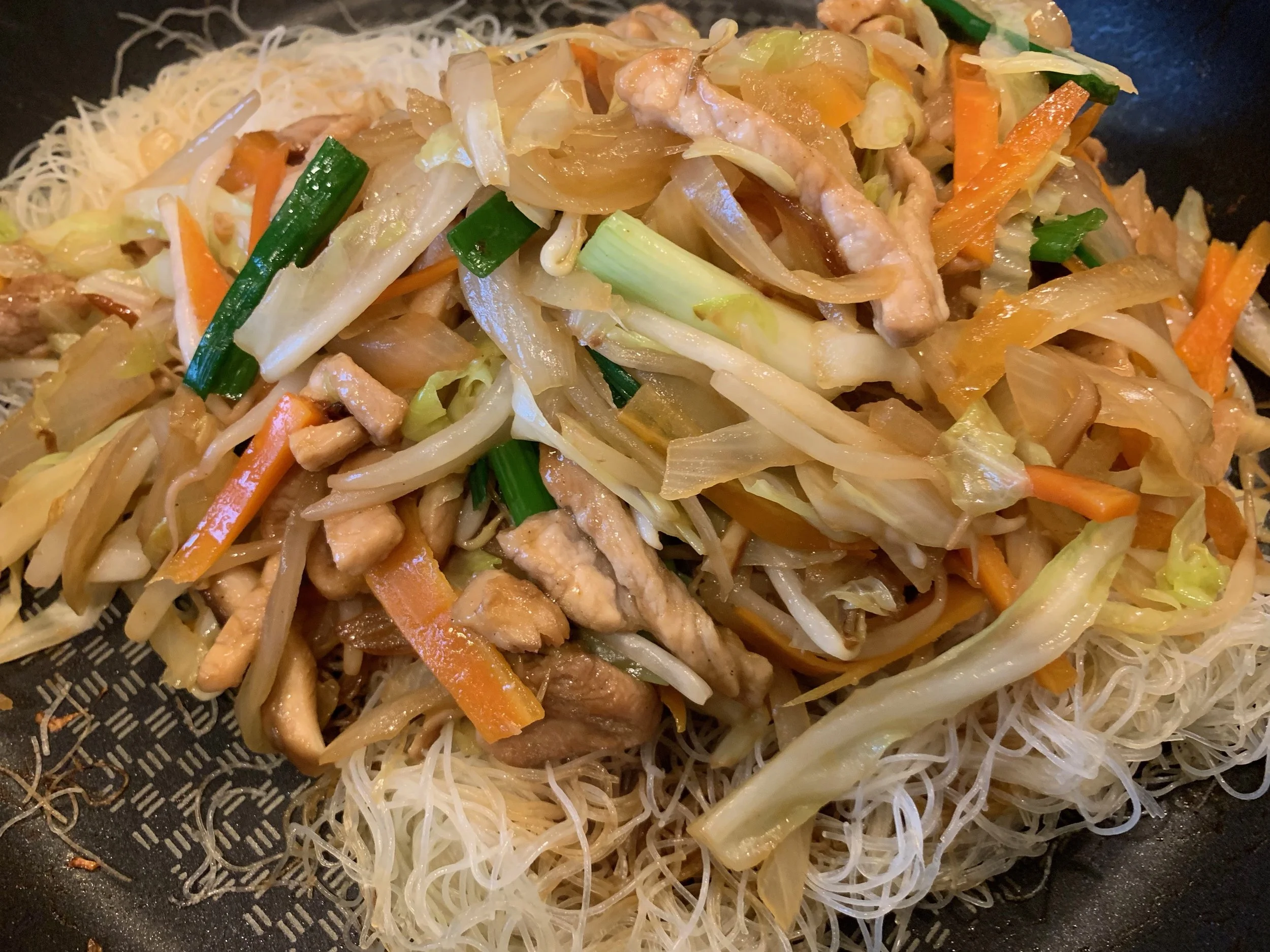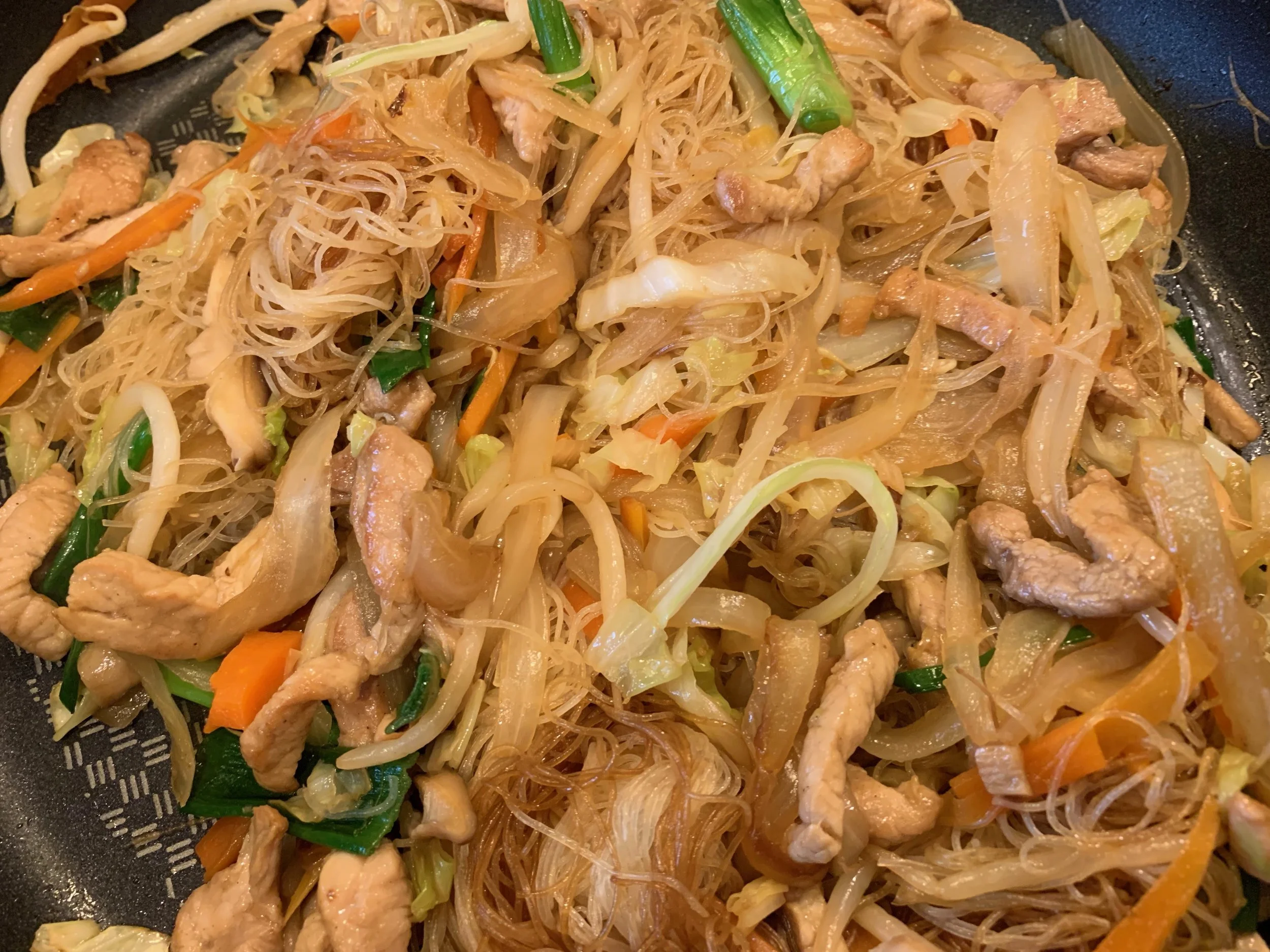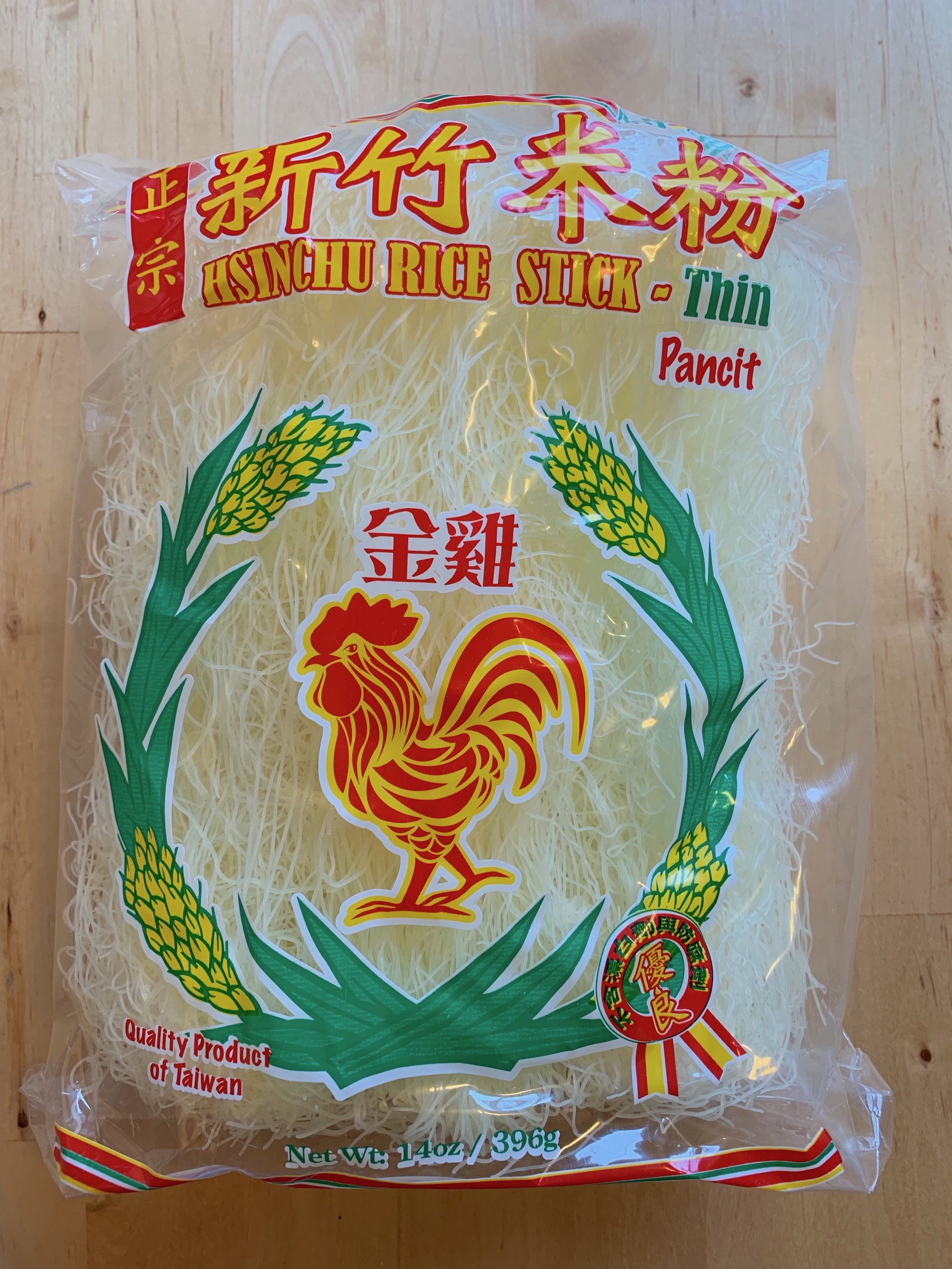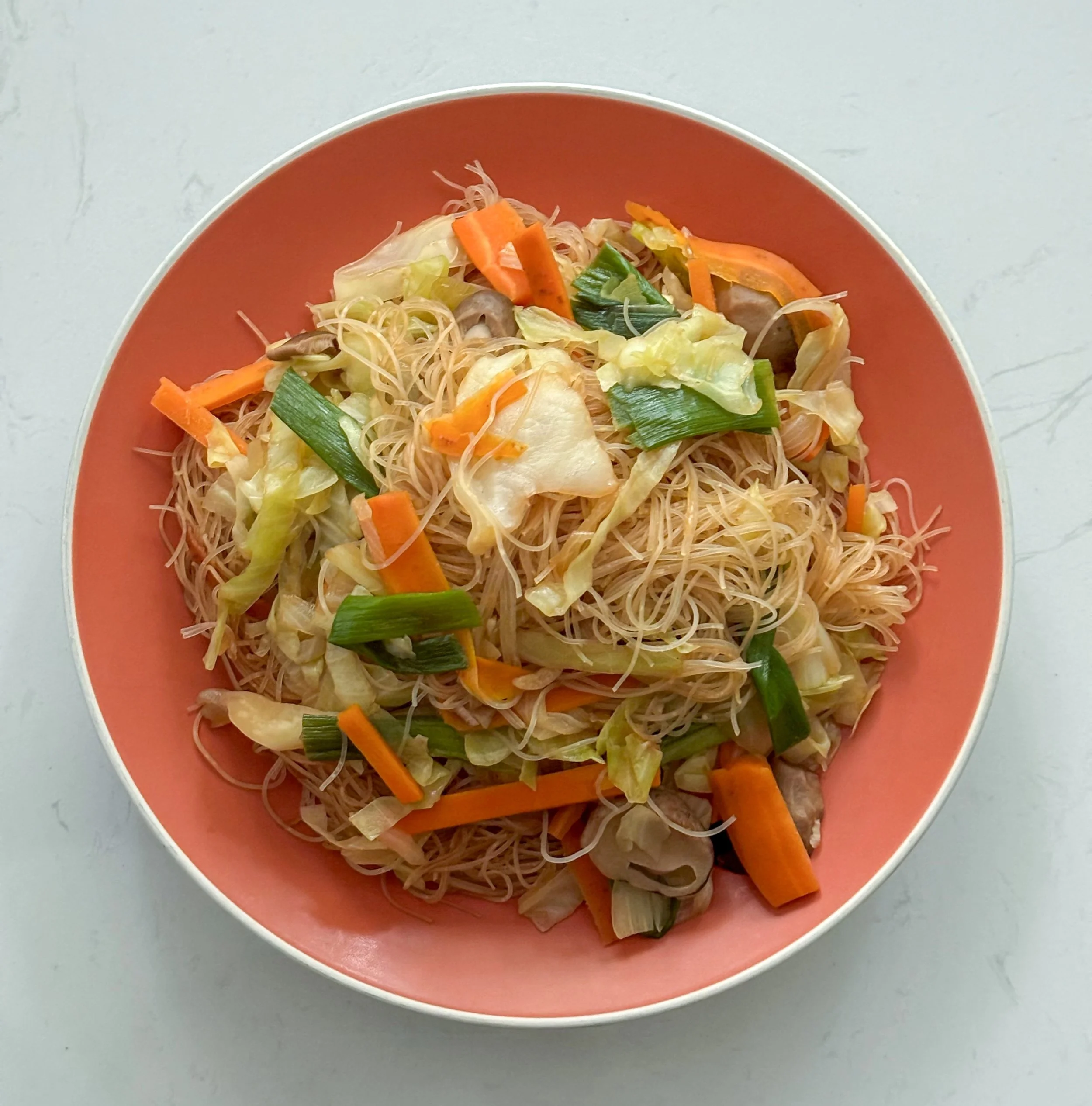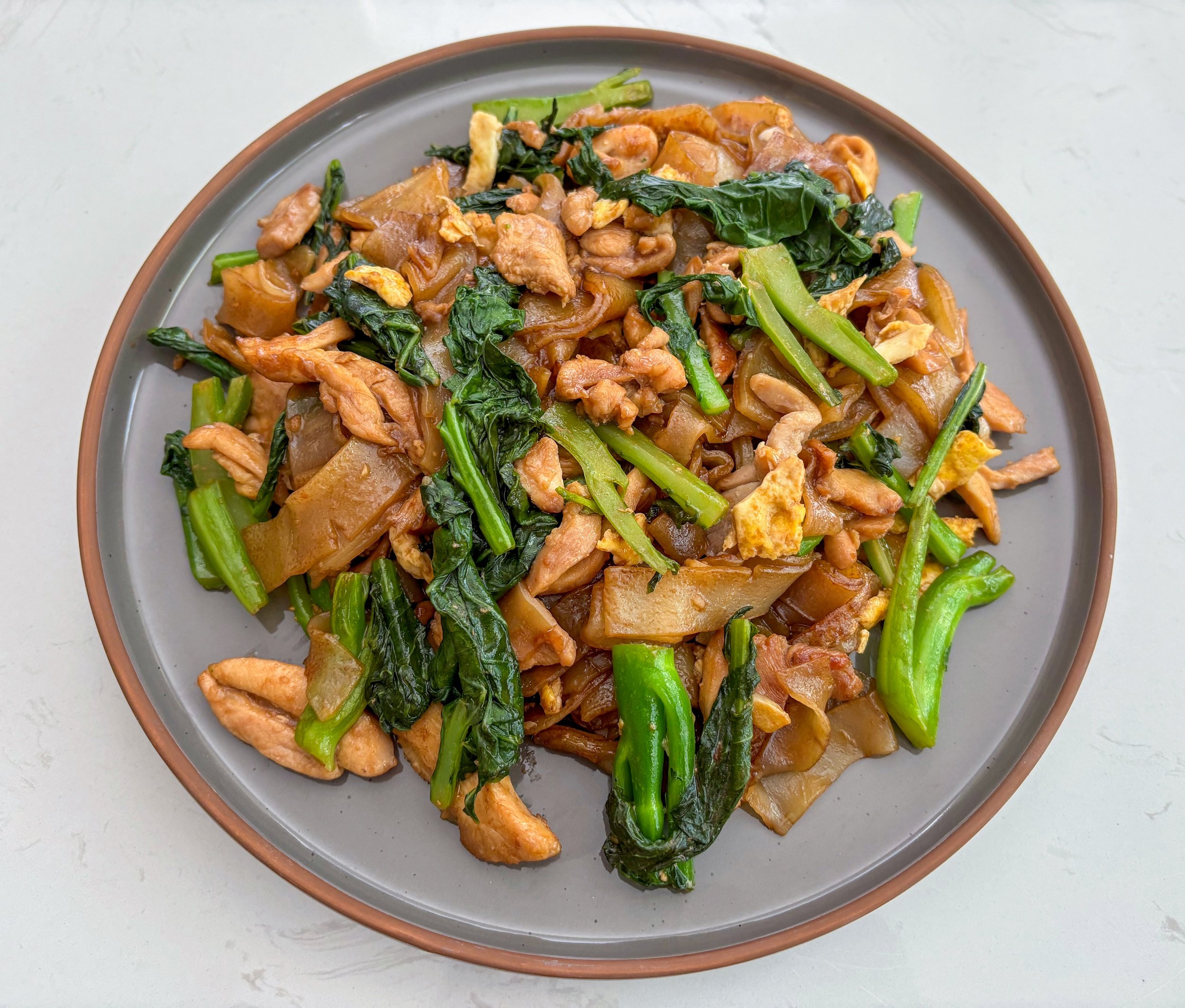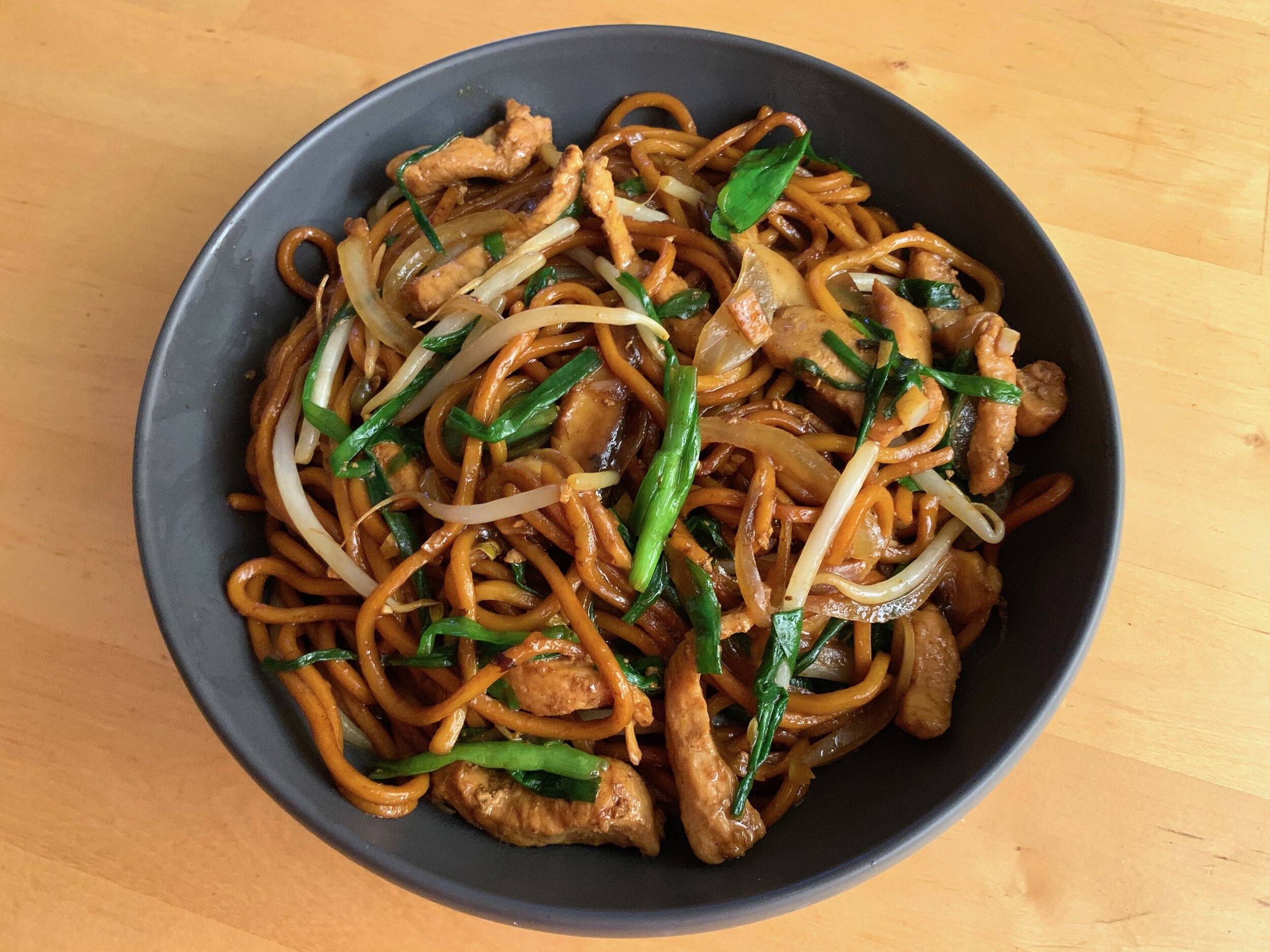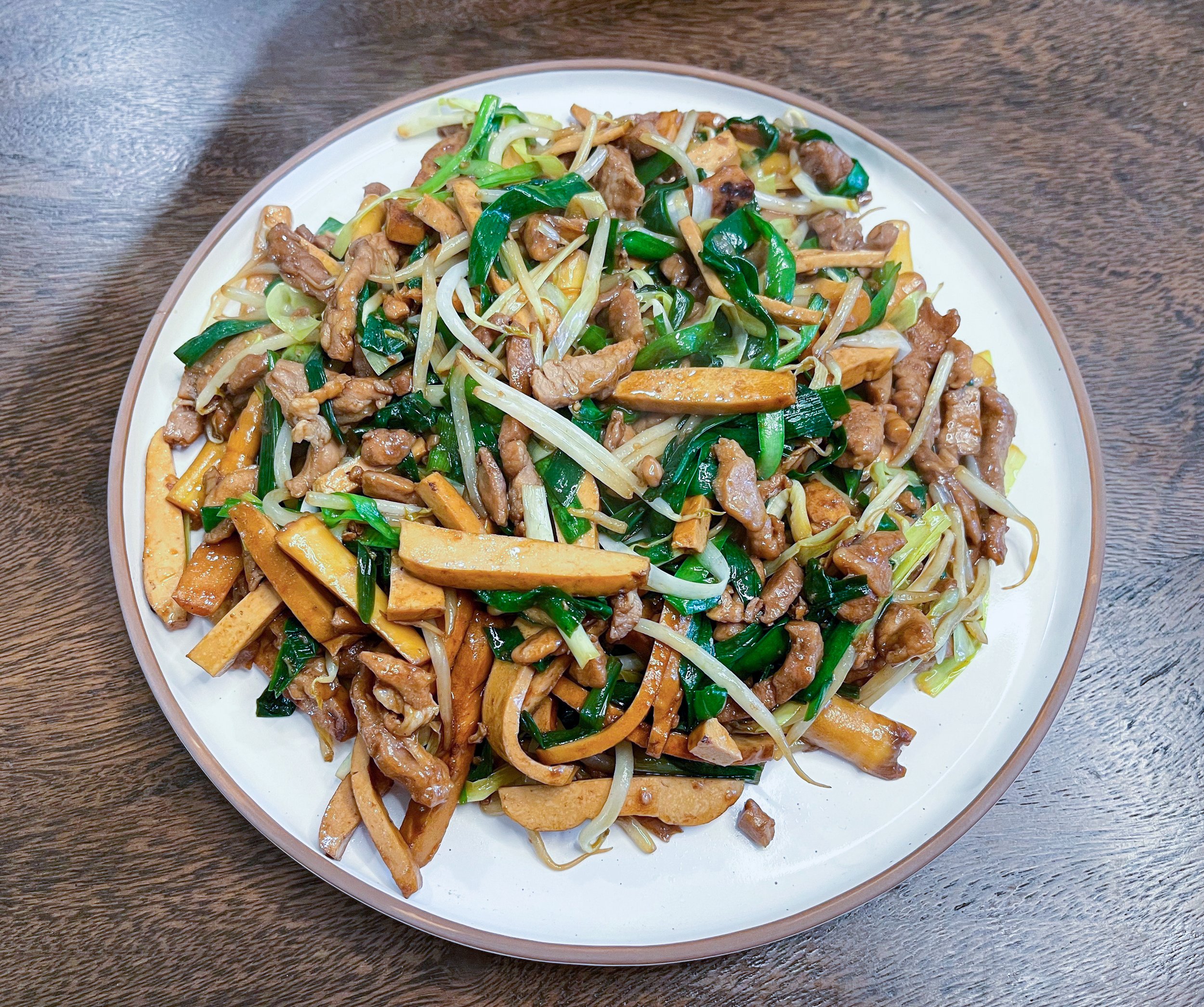Taiwanese Fried Rice Noodles

台式炒米粉 (Tai Wan Chao Mi Fen)
Mi fen (米粉) are thin noodles made of rice flour and water [1]. Sometimes translated as rice vermicelli, these delicate noodles are common in East and Southeast Asian cuisines. In Taiwan, mi fen is most often prepared as a stir fry, lightly flavored with soy and generously tossed with marinated pork and fresh vegetables. This is usually done in one go in a large wok over high heat. However, as home ranges are neither able to accommodate a sufficiently large wok, nor generate the requisite heat, we will be preparing this dish using a two-burner method, cooking the meat and vegetables individually, and then combining them in the pan.
Ingredients
For the Pork
8 oz pork loin
1 tsp soy sauce
1 tsp vegetable oil
¼ tsp white pepper
or: 8 oz marinated pork slivers
For the Noodles
8 oz dried rice noodles
6 shiitake mushrooms, thinly sliced
1 onion, thinly sliced
2 carrots, julienned
6 oz Taiwanese cabbage, thinly sliced
2 cups bean sprouts
3 scallions, chopped
2 cloves garlic, minced
2 tbsp dried shrimp
2 tbsp soy sauce
vegetable oil
Salt to taste
You can find mi fen (米粉) in Asian supermarkets, though labeling in English can be very inconsistent. Look for “thin rice noodles”, “rice vermicelli”, or “Hsinchu rice sticks”. You will likely find other types thin noodles, made of wheat flour, mung bean starch, and sweet potato starch. These are not substitutes! They all have very different textures when cooked, and are not suitable for this application. Be sure you find noodles made with rice flour.
With noodles acquired, we can turn our attention to the other ingredients. Slice the pork loin against the grain into thin strips about ¼ inch wide, and prepare a simple marinade consisting of 1 teaspoon of soy sauce, 1 teaspoon of vegetable oil, and ¼ teaspoon of white pepper. As pork loin is a fairly lean cut, this marinade will help to keep the meat from overcooking. Mix well, and set aside for 20 minutes.
While the pork marinates, let us consider the vegetation. This dish is fairly flexible when it comes to the vegetables you choose to use, but the classic set is presented here—shiitake mushrooms, onions, carrot, Taiwanese cabbage, bean sprouts, and scallions. As with all stir fries, a thorough mise en place will pay dividends when it’s time for ingredients to hit the heat. Thinly slice the mushrooms, onions, and cabbage, julienne the carrot, making matchsticks, and chop the scallion into 2 inch pieces. Mince the garlic and set aside with the dried shrimp.
Because dried rice noodles tend to be fragile when dry, the best way to prepare them for cooking is a gentle soak in water. However, soaking them for too long will result in waterlogged noodles which will not stir-fry well. For mi fen, a 10 minute soak in lukewarm water will be sufficient. After 10 minutes, drain the noodles well and set them aside.
When the pork is done marinating, heat about a teaspoon of vegetable oil in a pan over high heat. This dish is traditionally cooked all at once in a very large wok. In a wok with a traditional burner, it is possible to cook ingredients in the middle of the wok, subjected to very high heat, while ingredients pushed to the edge are just kept warm. However, at home we have neither the jet engine heat of a wok burner, nor the surface area of a large wok, so instead of pushing cooked ingredients to the edge for mixing later, we will be pulling cooked ingredients sequentially from the pan.
When the oil is hot, add the marinated pork to the pan and fry for about 2 minutes, stirring occasionally, until the pork is cooked through and has taken on some color. Remove the pork from the heat. I like to use a large steel mixing bowl for this, since the pork will be joined by the vegetables in short order.
Add a bit more oil to the pan if necessary, then add the minced garlic and dried shrimp. Fry until fragrant, which should be about 30 seconds. Then add the carrots and onions, as these vegetables take longer to cook. Cook, covered and stirring occasionally, for about 3 minutes. Then add the cabbage and mushrooms, which require less total cook time. Cover the pan again and continue to cook for another 3 minutes, until the vegetables are softened. Finally, add the bean sprouts and scallions, which just have to be warmed through. Cook for an additional minute, stirring to combine. Then remove the vegetable mixture from the heat, placing them into the same bowl as the pork.
Wipe out the pan. Now it’s time for the noodles. Mi fen are not very dense, and in a standard pan the full 8 ounces of rehydrated noodles can be quite difficult to manage. Furthermore, we want to maintain the dry heat of a stir-fry, and if we add all the noodles at once to the pan, we risk sliding into the territory of boiling. So unless you have a very large pan or wok, I’d recommend doing the final stir-fry in two batches [2]. For one batch, heat 1 tablespoon of vegetable oil in the pan over medium heat. When it’s hot, add half of the noodles to the pan. Be sure that the noodles are well drained—drops of water will cause splattering. Cook the noodles, moving them constantly about the pan, for 2 minutes. As you move them about, try to untangle them and loosen any clumps of noodle—well-handled chopsticks are the best tool for doing this.
After 2 minutes, the noodles are not yet fully cooked, but should be noticeably softer. Add half of the pork and vegetable mixture back to the pan and toss to combine. Continue to cook for 2 more minutes, continuing to stir and toss. Salt to taste, and remove the first batch of finished noodles from the heat. Wipe out the pan if necessary, and repeat with the second batch of noodles.
Fried rice noodles are traditionally served hot, with Chinkiang rice vinegar and white pepper at the table as optional condiments to be stirred in by guests. However, this dish can also be made in advance, as it reheats well and also can be served cold.
Substitutions
This dish is very flexible when it comes to protein choice—you can substitute the cooked pork loin for chicken, Taiwanese minced pork, Chinese sausage, and/or shrimp. If you can’t find Taiwanese cabbage, you can use Napa cabbage or green cabbage. Other common components you can choose to add include bamboo shoots, enoki mushrooms, scrambled eggs, and cilantro.
For a vegetarian version of this dish, omit the dried shrimp, and substitute bean curd for the pork (or omit protein entirely). However, avoid using normal tofu in this dish—it has too much moisture for this application.
Another great spin on this dish is to use pumpkin or butternut squash, adding a nutty, sweet flavor. This version is known as nan gua chao mi fen (南瓜炒米粉).
[1] Confusingly, rice flour is also usually translated to mi fen (米粉). One needs to rely on context to determine whether the flour or the noodles are being talked about.
[2] If you know what you’re doing, another option is to use two pans simultaneously on two burners and do these steps in parallel, which saves some cooking time.
Recipe
Prep Time: 15 min Cook Time: 20 min Total Time: 45 min
(+10 min inactive)
Difficulty: 2/5
Heat Sources: 1 burner
Equipment: pan
Servings: 6
Ingredients
For the Pork
8 oz pork loin
1 tsp soy sauce
1 tsp vegetable oil
¼ tsp white pepper
or: 8 oz marinated pork slivers
For the Noodles
8 oz dried rice noodles
6 shiitake mushrooms, thinly sliced
1 onion, thinly sliced
2 carrots, julienned
6 oz Taiwanese cabbage, thinly sliced
2 cups bean sprouts
3 scallions, chopped
2 cloves garlic, minced
2 tbsp dried shrimp
2 tbsp soy sauce
vegetable oil
Salt to taste
Instructions
1. Cut the pork loin into strips, and marinade with 1 tsp soy sauce, 1 tsp vegetable oil, and ¼ tsp white pepper. Set aside for 20 minutes. While the pork marinates, wash and slice the vegetables.
2. Soak the rice noodles in lukewarm water to soften. After 10 minutes soaking, drain the noodles well.
3. Heat about 1 tsp vegetable oil in a pan over high heat. Add the marinated pork to the pan and fry for about 2 minutes, until cooked through. Remove from heat.
4. Add a bit more oil in the pan if necessary, then add the minced garlic and dried shrimp and fry until fragrant, about 30 seconds. Add the carrots and onions to the pan and cook, covered, for 3 min, stirring occasionally.
5. Add the cabbage and mushrooms and continue to cook, covered, for about 3 minutes, until the vegetables are softened.
6. Add the bean sprouts and scallions to the pan and cook for 1 minute. Remove the vegetables from the heat, and wipe out the pan.
7. Bring together the dish in two batches (unless you have a very large wok). Heat 1 tbsp of vegetable oil to the pan over medium heat, and add half of the softened rice noodles. Cook, moving the noodles constantly, for 2 minutes.
8. Add 1 tbsp soy sauce to the noodles and mix. Return half of the pork and half of the vegetable mixture to the pan, and toss to combine the ingredients.
9. Cook for an additional 2 minutes, salt to taste, and remove from the heat. Repeat steps 7 and 8 for the second batch.
10. Serve with Chinkiang vinegar and white pepper at the table.
